Sabrina Musatian
MIGS: Meta Image Generation from Scene Graphs
Oct 22, 2021
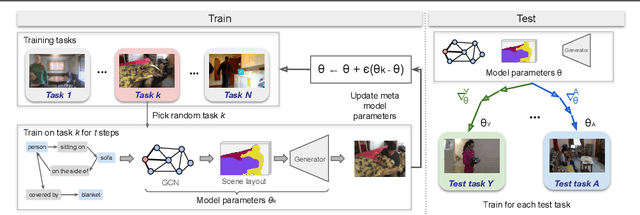

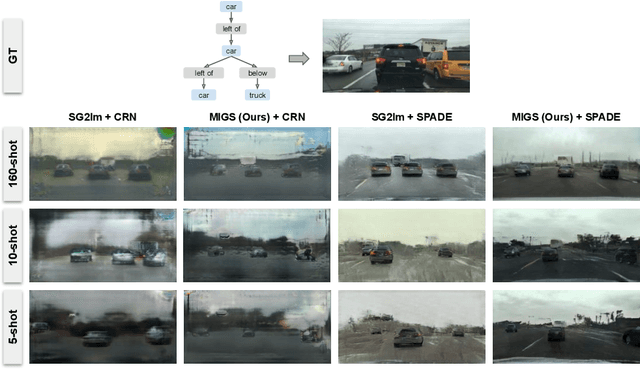
Abstract:Generation of images from scene graphs is a promising direction towards explicit scene generation and manipulation. However, the images generated from the scene graphs lack quality, which in part comes due to high difficulty and diversity in the data. We propose MIGS (Meta Image Generation from Scene Graphs), a meta-learning based approach for few-shot image generation from graphs that enables adapting the model to different scenes and increases the image quality by training on diverse sets of tasks. By sampling the data in a task-driven fashion, we train the generator using meta-learning on different sets of tasks that are categorized based on the scene attributes. Our results show that using this meta-learning approach for the generation of images from scene graphs achieves state-of-the-art performance in terms of image quality and capturing the semantic relationships in the scene. Project Website: https://migs2021.github.io/
Unconditional Scene Graph Generation
Aug 12, 2021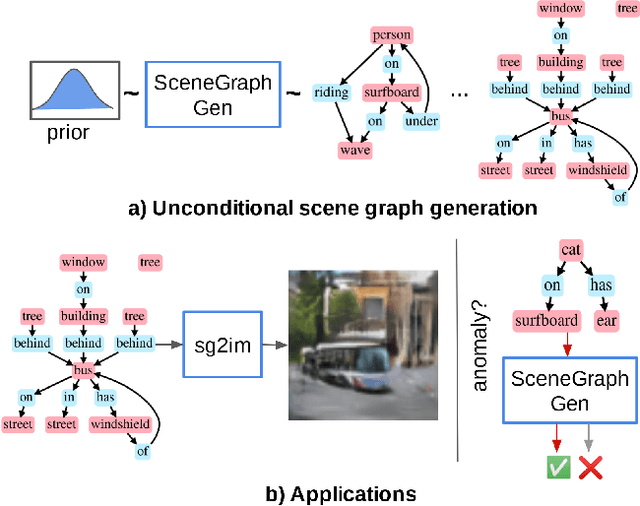

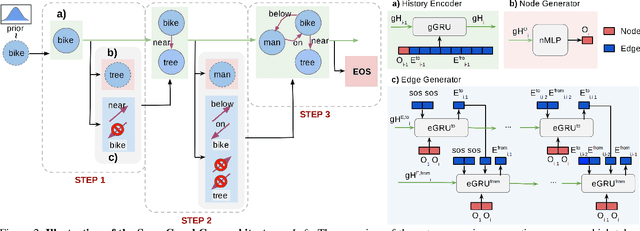
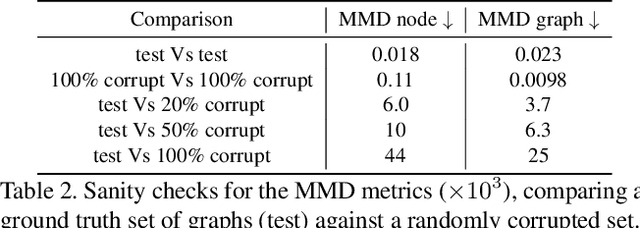
Abstract:Despite recent advancements in single-domain or single-object image generation, it is still challenging to generate complex scenes containing diverse, multiple objects and their interactions. Scene graphs, composed of nodes as objects and directed-edges as relationships among objects, offer an alternative representation of a scene that is more semantically grounded than images. We hypothesize that a generative model for scene graphs might be able to learn the underlying semantic structure of real-world scenes more effectively than images, and hence, generate realistic novel scenes in the form of scene graphs. In this work, we explore a new task for the unconditional generation of semantic scene graphs. We develop a deep auto-regressive model called SceneGraphGen which can directly learn the probability distribution over labelled and directed graphs using a hierarchical recurrent architecture. The model takes a seed object as input and generates a scene graph in a sequence of steps, each step generating an object node, followed by a sequence of relationship edges connecting to the previous nodes. We show that the scene graphs generated by SceneGraphGen are diverse and follow the semantic patterns of real-world scenes. Additionally, we demonstrate the application of the generated graphs in image synthesis, anomaly detection and scene graph completion.
Towards Semantic Interpretation of Thoracic Disease and COVID-19 Diagnosis Models
Apr 04, 2021



Abstract:Convolutional neural networks are showing promise in the automatic diagnosis of thoracic pathologies on chest x-rays. Their black-box nature has sparked many recent works to explain the prediction via input feature attribution methods (aka saliency methods). However, input feature attribution methods merely identify the importance of input regions for the prediction and lack semantic interpretation of model behavior. In this work, we first identify the semantics associated with internal units (feature maps) of the network. We proceed to investigate the following questions; Does a regression model that is only trained with COVID-19 severity scores implicitly learn visual patterns associated with thoracic pathologies? Does a network that is trained on weakly labeled data (e.g. healthy, unhealthy) implicitly learn pathologies? Moreover, we investigate the effect of pretraining and data imbalance on the interpretability of learned features. In addition to the analysis, we propose semantic attribution to semantically explain each prediction. We present our findings using publicly available chest pathologies (CheXpert, NIH ChestX-ray8) and COVID-19 datasets (BrixIA, and COVID-19 chest X-ray segmentation dataset). The Code is publicly available.
 Add to Chrome
Add to Chrome Add to Firefox
Add to Firefox Add to Edge
Add to Edge